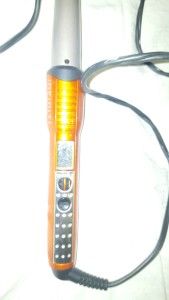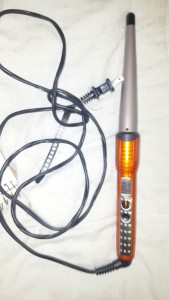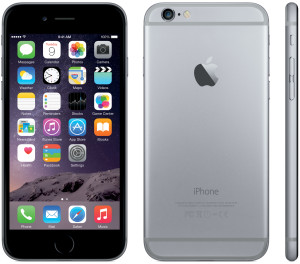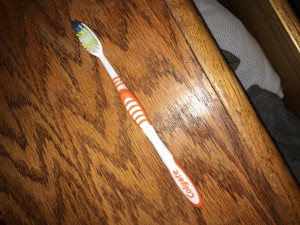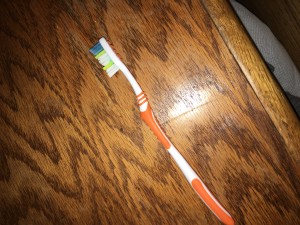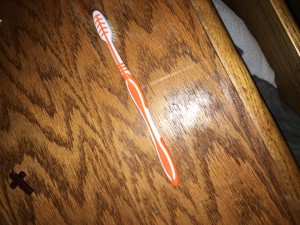Hair Curling Wand: Investigation Using the Prownian Method
Description: The object is about 12 inches long and 1-2 inches wide. It is made from a few different materials, one being metal that is able to be rapidly heated. The other materials include a plastic handle with ridges on it. There are plastic buttons as well. The color of the object is bright orange and eye-catching.
Deduction: The object is predominantly used by women, or maybe some men who have long hair. It is kept with other beauty supplies, most likely in a bathroom drawer or cabinet. The purpose is to make hair curly that was previously not curly.
Speculation: Consumers believe that they are more physically attractive with curl-styled hair. Someone who curls their hair maybe wants their hair to be naturally curly, but it isn’t. Maybe the user wants to suggest that they care and make an effort towards their appearance by spending time curling their hair with the curling wand.
Questions Based on Speculation:
- Do users enjoy using the curling wand?
- Is the wand-style more preferable to users than the previous curling irons that had a clamp? Why was this change made to curling irons?
- Do the users feel better about their appearance after using the curling wand?
Additional Sources:
Doheny, Kathleen, and Louise Chang, MD. “How To Avoid Hair Damage from Blow Dryers, Flat Irons, and Curling Irons.” WebMD. Accessed January 23, 2016. http://www.webmd.com/beauty/hair-repair/how-not-to-wreck-your-hair?page=1.
- This post uncovered a lot about the culture, habits and beliefs surrounding the curling iron. It discussed how those who style their hair using heated tools “look great”. It also discusses how buying a “good curling iron” will make a difference in its effectiveness, and that some curling irons are made more cheaply than others.
Terry, James S. “Material Object as Document: A “Hair-Curling” Classroom Exercise.” The Journal of American History 84, no. 4 (1998): 1457. JSTOR.
- This was a peer reviewed scholarly article about a classroom exercise involving a 19th century curling iron, and what it could reveal about the history of American families. The main message I received from skimming this article, is that with proper direction and thorough investigation using the method we have learned from this activity, a lot can be discovered concerning the era from which the object is from.
The blog post I read was written with a considerably different view than Prown’s. Not much is directly said about the culture around this post, but a lot can be inferred. I gather that the central idea surrounding curling irons is vanity and appearance. I gathered that by deciphering through a biased view of what “looks great”.
The article I read followed a view similar to Prown’s. The article starts off with an entirely physical description of the object before beginning to deduce or speculate any additional information.
